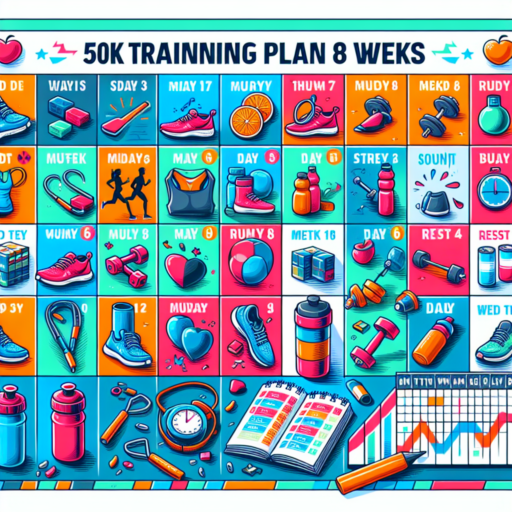How to train for a 50 mile trail run?
Training for a 50 mile trail run requires a dedicated plan that focuses on building endurance, strength, and technical trail-running skills. Initially, building a solid foundation is crucial. This means gradually increasing your weekly mileage over the course of several months, with a focus on back-to-back long runs that simulate the fatigue you’ll experience during the actual event.
Incorporating strength and conditioning exercises into your routine is also vital for improving performance and preventing injuries. Exercises such as squats, lunges, and planks will strengthen your core and leg muscles, making you a stronger, more resilient runner. Additionally, consistently practicing on trails with varying elevations and technical terrains will enhance your ability to navigate the specific challenges you’ll face during the 50 mile run.
Rest and recovery are equally important aspects of your training regimen. Integrating rest days and lower mileage weeks into your schedule will allow your body to recover and adapt to the stresses of training. Listening to your body and adjusting your training plan as needed is crucial to avoid overtraining and injury, ensuring you arrive on race day well-prepared and confident.
How many miles per week should I train for a 50 mile run?
Determining the optimal weekly mileage for training for a 50-mile run depends on several factors including your running background, fitness level, and the amount of time you have to prepare. However, a common guideline suggests aiming for a base of 40 to 50 miles per week at the start of your training, gradually increasing to peak weeks of 70 to 100 miles as you approach race day. It’s crucial to build this mileage gradually to avoid injury and ensure proper recovery.
Incorporating long runs into your weekly training is essential for preparing your body and mind for the endurance required for a 50-mile race. These long runs, typically performed once a week, should gradually increase in distance, allowing your body to adapt to longer periods of running. A good rule of thumb is to increase your longest run by about 10% each week. Additionally, including back-to-back long run days can teach your body to run efficiently on tired legs.
Variety in training is also key; mixing in speed work, hill repeats, and recovery runs can help build a strong base of endurance while preventing burnouts and injuries. It’s beneficial to listen to your body and incorporate rest or low-intensity weeks, to allow your body to recover especially after intense training weeks or long runs. Remember, quality training is more beneficial than simply piling on miles without a purpose.
Can you train for an ultra in 12 weeks?
The question of whether it’s possible to train for an ultra-marathon in just 12 weeks is a hot topic among running enthusiasts and seasoned athletes alike. While it might seem like a daunting task, with the right approach and rigorous dedication, preparing your body and mind for such an endurance event in this timeframe is indeed feasible for some people. However, it’s important to consider individual fitness levels, running experience, and the specific demands of the ultra-marathon in question.
Starting from Scratch vs. Existing Endurance Base: The feasibility of training for an ultra in 12 weeks greatly depends on your starting point. Individuals with a solid endurance base, who are perhaps already comfortable running a marathon or participating in long-distance trail running, will find the transition to ultra distances more manageable within this timeframe. Conversely, beginners to long-distance running may need to assess their goals more carefully, as the risk of injury and burnout is significantly higher without a well-established endurance foundation.
Training Components and Strategy: A strategic approach to ultra-marathon training within a 12-week period should include a mix of long runs, recovery periods, strength training, and perhaps most importantly, specificity training that mimics the conditions of the race. Whether it’s adapting to the elevation, technical terrain, or climate, ensuring that your training aligns closely with the ultra’s requirements is crucial. Notably, increasing mileage too quickly can lead to injuries, making a gradual build-up and acknowledging the signs your body gives you paramount.
No se han encontrado productos.
How to train for a 50 mile walk?
Training for a 50 mile walk is an endeavor that requires dedication, planning, and the right approach. To begin, it’s crucial to build a solid foundation. This means starting with shorter distances and gradually increasing your mileage over time. A well-structured training plan should include varied workouts, incorporating both long walks to build endurance and shorter, faster walks to enhance your stamina and walking speed. Also, incorporating rest days into your regimen is vital to allow your body to recover and adapt.
In addition to incrementally increasing your distance, focusing on cross-training activities can significantly benefit your preparation. Activities such as swimming, cycling, and strength training can improve your overall fitness and reduce the risk of injury by balancing your muscle use and boosting your walking efficiency. Paying attention to your body’s signals is crucial; if you experience any discomfort or pains, consider it a warning to reassess your training intensity or form.
Equally important is the role of nutrition and hydration in your training plan. For long-distance walks, your body needs a steady supply of energy. Consuming a balanced diet rich in carbohydrates, proteins, and healthy fats ensures you have the necessary fuel. Staying hydrated is also key, especially during long training sessions, to prevent dehydration, which can severely impact your performance and recovery. Implementing and sticking to a nutrition plan tailored to your training demands can make a significant difference in your preparation for a 50 mile walk.




